
Does Venus-as-a-Morning-Star Indicate Wars?
War Cycles in Astrology
By Didem Can, 2024
Abstract
In the common lore of astrology Venus in her phase as a Morning Star has been described as a war indicator, and the main purpose of this research is to explore this idea or doctrine.
A survey of classical/Hellenistic, Arabic, Medieval, and later sources did not produce significant support for this concept. However we do find indications in other sources, such as temples and coins. The purpose of this work / paper is to identify the sources of this doctrine, as well as attempt to prove or disprove it. In this process I also try to determine which point of time in the event of war this doctrine may apply to.
So far, the results of this research are not conclusive. Therefore, a secondary attempt is to identify the astrological war signatures by examining planetary cycles and planetary sign placement, distribution, and aspect.
The Sources
In Greek and Mesopotamian mythological sources, Venus appears in stories of war and conflict as Aphrodite, Ishtar and Inanna. For example, in the story of Adonis and Aphrodite;
Aphrodite (Venus) curses Myrrha, the daughter of the Assyrian King Cinyras, for not worshipping her as the goddess of beauty and made her have an affair with her father. From this relationship, Adonis comes into the world, and Aphrodite falls in love with him as soon as she sees the baby. She hands him over to the underworld goddess Persephone to hide him from the other gods. However, Persephone, who is in love with Adonis, refuses to return him to Venus and enmity begins between them.
The versions of Ovid, Apollodorus, and Bion form two more or less canonical storylines. However, there are so many different versions, although all sources agree that Adonis died by a boar. (1)
In this mythological story, we observe Venus not just as the goddess of love and beauty, but also with different characteristics that engender a love triangle blended with jealousy and revenge.
In Homer’s Iliad, the story of the Judgement of Paris begins with the goddess of Discord Eris challenging the most beautiful goddesses to take a golden apple that she threw among the guests at a wedding. Juno, Minerva, and Venus compete to win, and Paris announces the winner is Venus. In response, the goddess Venus promises him Helen of Troy and causes the outbreak of the Trojan War. (2) Again, in another story, she comes across as the goddess who provokes the war.
The Mesopotamian Star is a symbol of the ancient Sumerian goddess Inanna and her East Semitic counterpart Ishtar. The symbol is mostly associated with the planet Venus, also known as the morning star. (3)
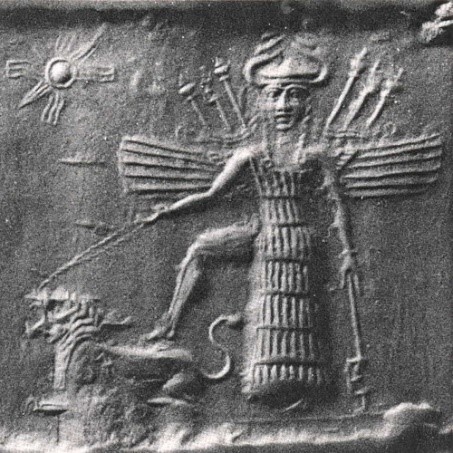 Venus was called Anahid Abaxtari during the Achaemenid Period, by the name Ishtar in Summer, and Inanna or Sami in Akkadian. On the one hand, she was the goddess of love and Fertility, on the other hand, she was also called the goddess of war. Many Mesopotamian kings hoped for help from Venus for their political legitimacy as kings, and there are even depictions of Ishtar/Innana as a warrior carrying prisoners in battle. (4)
Venus was called Anahid Abaxtari during the Achaemenid Period, by the name Ishtar in Summer, and Inanna or Sami in Akkadian. On the one hand, she was the goddess of love and Fertility, on the other hand, she was also called the goddess of war. Many Mesopotamian kings hoped for help from Venus for their political legitimacy as kings, and there are even depictions of Ishtar/Innana as a warrior carrying prisoners in battle. (4)

Samuel Noah Kramer who was one of the world's leading Assyriologists, an expert in Sumerian history and Sumerian language, mentioned in his book that he had the opportunity to study the poem referring to Inanna and depicting several characters of the goddess in the British Museum (BM 23820). Quote;
Queen of the earth-god, proud, supreme among the heaven-gods,
İnanna, who pours down rain over all the lands, over all the people, loud-thundering storm,
Hierodule, who makes heavens tremble, who makes the earthquake, who can soothe your heart? You who pour down firebrands over the orb, who flash like lightning over the highland…
South Wind, whose deafening command split asunder the great mountains,
You who trample the disobedient like a wild buck, who makes heaven and earth tremble, who are the consternation of the land,
Whose cry reaches heaven and earth, whose roar is all-destructive… Your earth-shuddering hand brings the midday heat over the sea,
When you stalk the heavens in the dark night, all the people are chilled by the breeze.
Your angry heart is a terrifying flood-wave that overflows all the river banks.
Poetry of Sumer, pg 89 Univ of California Press (5)
According to Kramer, on the seventh day of every new moon, after the Moon begins to appear in the [western] sky, the goddess is calming down and changing her character.
Catherine Julia Smallcombe from The University of Queensland, Australia, claims that the military properties of Venus were used for political purposes in Rome, especially by Sulla, Pompey and Julius Caesar. According to Smallcombe, The Forum Iulium and its Temple of Venus Genetrix functioned as a permanent reminder of Caesar’s power and position in the state as the result of the goddess’ patronage. (6) Venus is depicted on Roman coins as a war hero and conqueror, providing a piece of supporting evidence (7)
In Enuma Anu Enlil, known as the oldest source on celestial prophecies, there is a statement about Venus as follows.
[MUL dil-bat ina] ITI.DU6 KUR-ha SA[L.KÚR.MEŠ ina KUR GÁL-MEŠ EBUR KUR GIŠ]
[If Venus rises in] Month VII: [There will be hostility in the land, the harvest will prosper] (8)
According to ibn Ezra, when Venus begins to approach the Earth from the farthest point, its influence on mundane incidents increases at the same rate. (9)
The Mayans, an important civilization of Mesoamerican culture, gave great importance to the planet Venus. We see her as a warrior goddess in Mesoamerican history. The Borgia Codex clearly notes that the heliacal rising of Venus as the morning star indicates a warrior Venus. (10)
Venus, the goddess associated with love, passion, and beauty, also symbolizes all kinds of drives that make a difference in our lives that can lead to conflict.
The effects symbolized by the morning and evening phases of Venus are drastically different from each other, presenting two opposite natures. It is assumed that Venus as the Morning Star displays confidence and passionate sensuality.
What is ‘Venus as a Morning star’?
Originally, the terms morning star and evening star were used only for the brightest planet Venus. It took ancient skywatchers time to realize that this bright star appearing on both the eastern horizon and the western horizon was the same planet.
In general, as the planet makes its orbit around the Sun, when it moves from the superior conjunction to the inferior conjunction (eastern elongation) the planet is the Evening Star. When it moves towards the superior conjunction (western elongation) it is the Morning Star. This phenomenon is depicted in both geocentric and heliocentric graphs below.
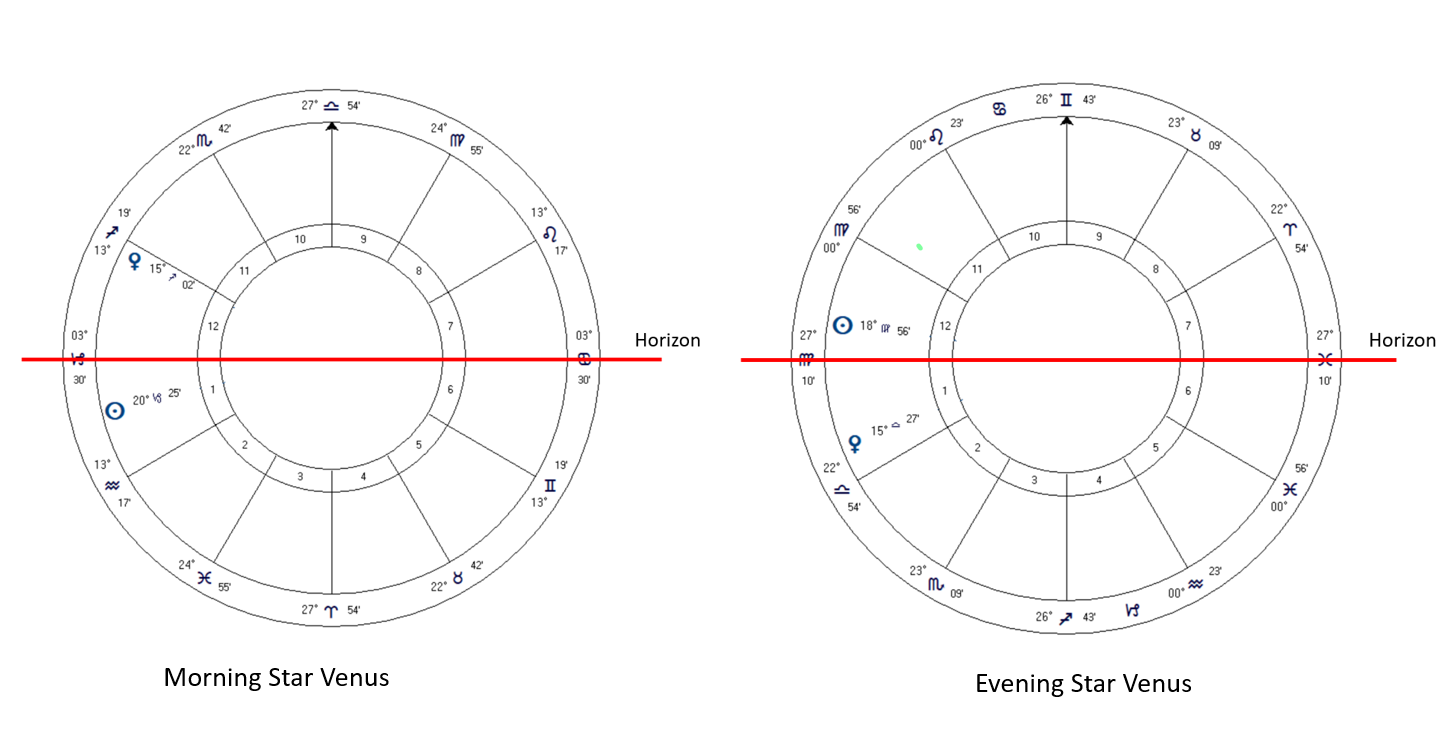
Geocentric point of view
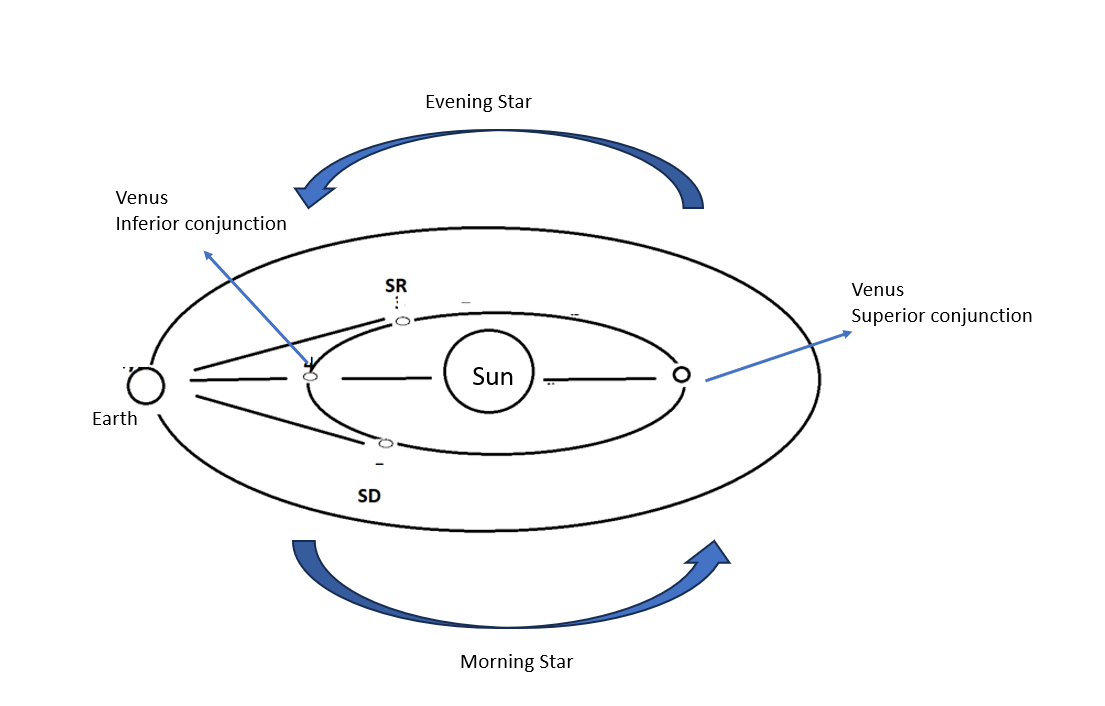
Heliocentric point of view
METHODOLOGY
Based on this information, this research aims to reveal the distinct indications of major wars around the world in astrological symbolism and review the role of morning star Venus. Factors that were observed in the sample group include the war planets, the aspects that led to the war, planet’s signs, planets conjunct fixed stars, planetary aspects to sensitive degrees, Venus phases during the eclipses and planetary cycles.
In addition to articles and books written on major wars and their effects, historical information is mainly taken from Wikipedia. Dates are used without changing the calendar. While working on charts, the angles of the charts and the aspects to these angles were ignored because there was no time information. Likewise, the aspects made by the Moon, (the fastest celestial object) were ignored because, without precise time information, they would cause deviation in statistical values.
The distribution chart of the wars dates by year is given below (graph1). The last war chart of the sample, which started with the Battle of Badr in 624, is the Ukrainian War in 2022.
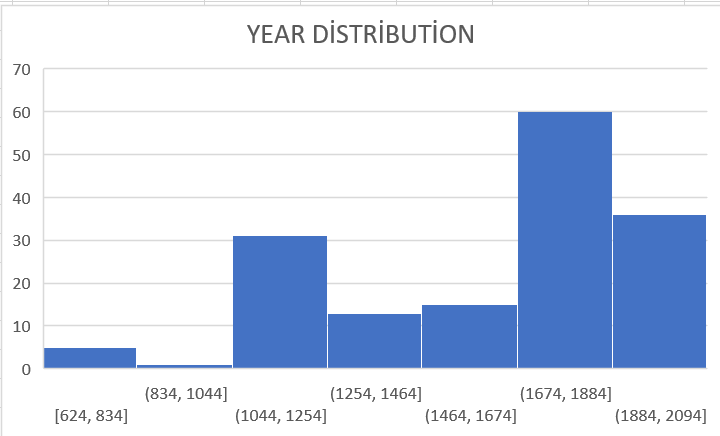
(graph1)
Since there was no decisive difference in the distribution of Venus as morning and evening star with 60 important battle charts, the sample was expanded to 161 battle charts.
In addition to the morning and evening star Venus in the event chart, Venus's phase during the eclipses that took place in the relevant period was also examined.
Only hard aspects of the planets have been studied, within 3 degree orb. Conjunction (0º), Semi-square (45 º), Square (90 º), Sesquiquadrate (135 º), Opposition (180 º).
Examined the frequency of fixed stars in conjunction with the planets within 1 degree orb.
Examined the distribution of the zodiacal placement of the planets
It was examined at what critical degrees the planets were in conjunction
Also examined planets found in conjunction with critical degrees, and as a result of the findings, which planets were aspecting these degrees.
Cardinal signs; 0 degree, 11 – 13 degrees, 24-26 degrees
Fix signs; 7-9 degrees, 20-21 degrees
Mutable signs; 3-4 degrees, 16-17 degrees, 29 degrees
The exact source of these degrees, which are currently known and interpreted as critical degrees, is unknown in classical/Hellenistic period. However, we find that Ibn Ezra and Vettius Valens mentioned the characteristics of some degrees of signs in their works.
For example: Ezra mentioned that the 6, 11, 17, and 23 degrees of Aries reduce chances (11). Valens describes the first degree of Aries as stormy, full of hail, windy, and destructive (12) and the first three degrees of Gemini as destructive and worthless. Neither Valence nor Ezra classifies critical degrees as modalities.
Among these degrees, the vernal equinox (0°Aries), which we define as the intersection of the equator and the ecliptic, is also known as the Aries point and is often used in the analysis of earthly events.
To slightly paraphrase Andre Barbault: The founder planetary cycle is a line in time and space in the universe, that has the essence common to the planets. Theses planetary cycles preside over the destiny of the world, with each conjunction being a homing point at the heart of the planetary whole. (13)
According to Harvey's definition, the waxing phase from 0-180° relates to the process of growth, expansion and optimism. The waning phase from 180-360° relates to the process of distribution, dissemination and decay, pessimism and withdrawal. (14)
Based on these approaches, I additionally examined the basic aspects and synchronicity of the five slow-moving planets with each other (Jupiter, Saturn, Uranus, Neptun and Pluto)
FINDINGS
Morning and Evening Stars
Examining the results of the morning star and evening star planets, there is no radical deviation that the morning star position of the planet is an indicator of war. For example, as shown below, Venus appears as the morning star in only 85 charts out of a total of 161 charts. (table 1)

(Table 1)
It would be more logical to describe the planet that rises before the Sun as a doryphory planet (spear-bearer) that clears the way for the Sun and shows how the Sun presents itself. We may also think of the planets rising before the Sun as messengers heralding the birth of a new king.
Eclipse and Venus Phases
Looking only at the eclipses of the years included in the sample, there is no significant deviation in the distribution of the Venus phase during the eclipses. In addition, no significant difference was observed only in eclipses close to the months of war. (table 2)

(Table2)
Aspects
In this research only hard aspects are used: 0°, 45°, 90°, 135°, and 180°. The most observed aspects in the data are semi-square (45°) and conjunction (0°).
The maximum distance of Venus from the Sun—the greatest elongation—is between 45-47 degrees. The maximum distance of Mercury from the Sun is 28 degrees.
Therefore, the only hard aspects that Venus and Mercury can make with the Sun are the semisquare (45°) and conjunction (0°).
All planetary combinations, excluding the Moon, were analyzed, but given the fact that slow-moving planets take a long time to form aspects, the faster ones, Mercury and Venus occur more frequently. (Graph2-3-4).
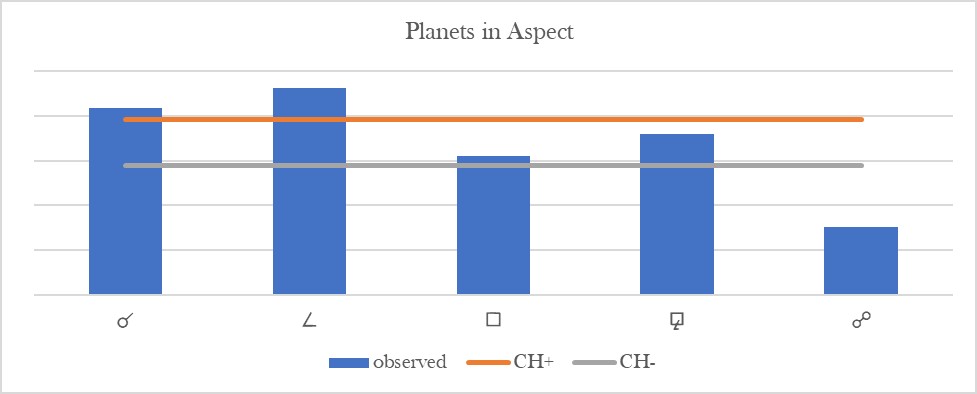
(Graph2)
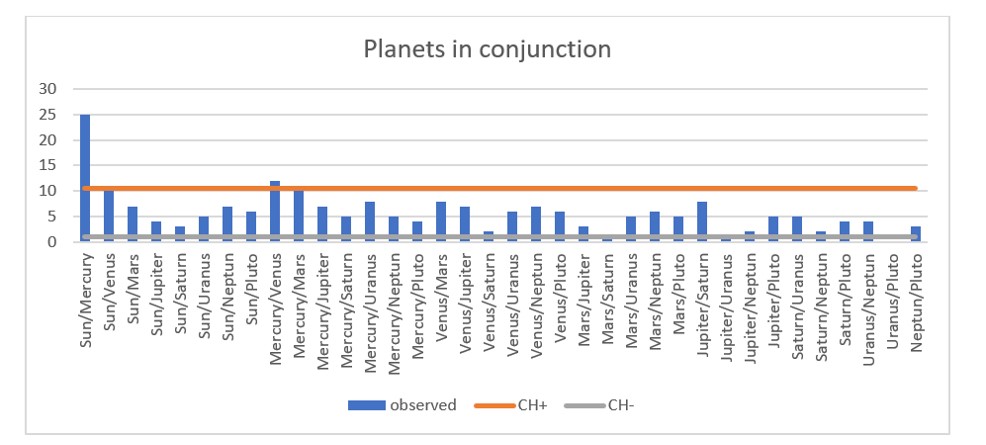
(Graph3)

(Graph 4)
When I tested these findings with pianists, political thinkers, biologists/physicians, and journalists, who are not associated with wars, I found the result to be significant (Table 3)

(Table3)
Signs
It might be expected that Aries, a combative and quarrelsome sign, should be more often encountered in the sample group, but Leo is the sign that stands out overwhelmingly in the data. (graph 5)
Aries is associated with impulsive actions, taking the first step, and acting spontaneously. Since it is a combative sign and the domicile of Mars, we take it for granted when this sign or its ruler Mars is involved there is a war. In fact, war is more than a simple fight. It is a planned and organized movement for a specific purpose and it requires a strong strategy.
Battles that took place with planets in Leo were distinctive for putting a spotlight on strong leaders and notable defensive (rather than offensive) engagements. The fixed nature of Leo planets were prevalent in months-long sieges where focused organizational abilities and staying power were most needed. In other instances, battles fought during Leo transits benefited from creative courage, out-performing battles under the hasty nature of Aries transits.
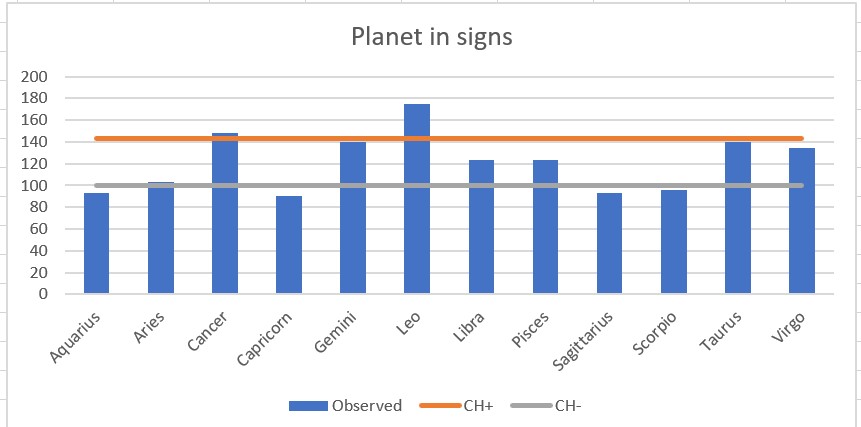
(graph5)
When I tested this finding with data of musicians (specifically pianists), political thinkers, biologists/physicians, and journalists, who are not associated with wars, I found the result to be significant (table4)

(Table 4)
Fixed Stars
When we look at planets conjunct fixed stars in the sample, we see that Kochab (beta Ursa Minor) stands out together with Sertan (ie, Acubens, alpha Cancer). (Graph 6)

(Graph 6)
Kochab
This is a giant orange star in the Ursa Minor constellation. It is 135 times the luminosity of the Sun. (15)
RA => 14h 50m 42.33s
Declination => +74º 09’ 19.81”
This star imparts to its natives endless courage, martial gains, rashness, violence, a rise to authority, malicious mischief. This star in general should be used with negative nativities. Use caution in delineation. (The Power Of the Fixed Stars-Joseph E. Rigor)
According to Rigor, Sun-Kochab gives endless courage, almost with do-or-die attitude. In this research, Kochab is most often in conjunction with the Sun, then with Pluto and Neptune
(Table 5)
According to Ptolemy, this bright star is like Saturn and in some degree like Venus. It is said to give indifference and improvidence of spirit, and to lead to many troubles.

(Table 5)
Sertan As can be seen in the graph, Sertan is the second most prominent fixed star in the sample. It is also known as the fixed star Acubens in the Cancer constellation.
RA => 08h 58m
Declination => +11.52’
It has nature of Saturn and Mercury. It has been called “the sheltering of hiding place,” and gives activity, malevolence and poison, making its natives liars and criminals. Acubens is spectrally as Venus, but it is in the claw and its reputation portends malevolence and poisoning.
According to Rigor; this star imparts to its native strength, perseverance a logical mind, one who can be outspoken, has high ideals, a speculator, an organizer, domineering, forceful. (16)
In the sample, just like the star Kochab, Sertan was most often observed together with the Sun after Neptune and Pluto (Table 6). Rigor emphasizes that high military effects are seen in the conjunction of this star with the sun.
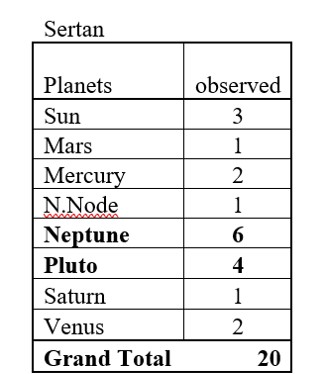
(Table 6)
Since I use the tropical zodiac in my research, the fixed stars were studied according to degrees of longitude. Considering that the sign of Leo stands out in the sample, it is not surprising that Acubens is at 13°Leo38”, while Kochab is located at 13°Leo19”.
When I tested these findings with pianists, political thinker, biologists/physicians, and journalists who are not associated with wars, I found the result to be significant. (Table7)

(Table 7)
Critical degrees
The Aries Point stands out more in the data compared to 4°Pisces and 8° Taurus (Graph 7). When the Aries Point was prominent, the planets and the aspects they make are also examined. Just like the collective planets, the Sun, Mercury, Venus, and Mars do not have a prominent hard aspect to the Aries Point, while we see that Jupiter's 45° aspect and Saturn's 180° aspect stand out. The triggering of the Aries Point by two social planets that organize and structure societies by traditions and beliefs, as well as by law and order, may be connected with an event on Earth such as war.
.jpg)
(Graph 7)
Planetary Cycles
The sample shows the prevalence of the invisible outer planets' cycles in the waning phase. We don't encounter a significant deviation in other planetary cycles. In fact, among the outer planets, the Uranus-Neptune cycle stands out compared to the other outer planets. (Graph 8)
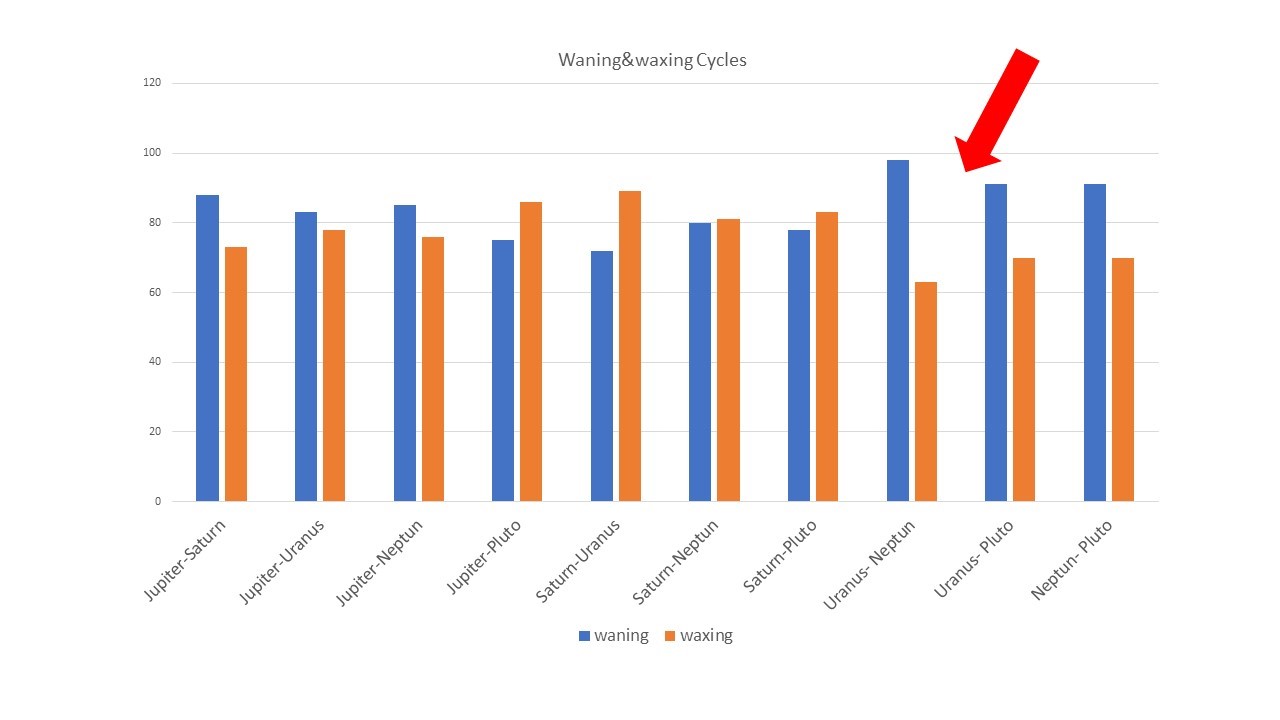
(Graph 8)
The Ptolemaic aspects that the slow-moving planets make with each other take a very long time. Because of this, the effects on the collective in the background are more accentuated.
Some events occur when other transiting planets activate these conjunctions, squares, or oppositions in time. But what is important is the change that these two planets, which move slowly, create in the collective counciousness.
the outer planetary cycles work in the background to change and break down the old patterns in the collective consciousness. The waning phases coincide with the decay and corruption of the prevalent structures in societies and the emergence of the need for the new in the collective. In my opinion, wars and epidemics/pandemics are the external events that most quickly effect the historical change in the collective.
Simultaneous Cycles
During the date range of war intensity in the sample, it was observed a maximum of 9 simultaneous aspects of slow-moving planets. (Jupiter-Saturn-Uranus-Neptun and Pluto – conjunction, sextile, square, trine, opposition, semi-sqaure, sesquiquadrate)
To understand the process of the two planets from one conjunction to the other, semi-square and sesquisquare aspects have also been included in the study, along with the ptolemaic aspects.

(Table 8)
Nine cycles (slow-moving planets aspects) took place during the year 1704 coinciding with the Great Northern War (1700-1721). The reason for this conflict was Russian resistance to the expansion of the Swedish empire.
Although the Swedish Empire tried to get help from the Ottoman Empire, it was defeated because it was not possible to fight on many fronts, and the Swedish expansion that had been going on for more than half a century came to an end. The Russians, on the other hand, gained a large coastal part on the shores of the Baltic Sea. Then they became one of the largest states in the world.
Nine cycles took place in 1755, coinciding with the Seven Years’ War between England and France (1756-1763): The Seven Years' War was a worldwide fight between England and France in the race to establish an empire. Although the Americans call this conflict the French and Indian War the Seven Years' War can be described as the first war that spread over a wide area around the world. Intense military conflicts took place not only in North America, but also in the Caribbean, South Asia, and West Africa. Although England won the war, they subsequently lost the colonies in America.
Another prominent date featuring the 9 different cycles is 1918. World War I was a global war centered on Europe that began in 1914 and ended on November 11, 1918. As a result of the tremendous progress in the lethality of weapons due to new technologies, about 9 million military personnel and approximately 10 million civilians lost their lives. Thus, this war caused the fifth-highest total of casualties in the history of the world and it led to many political changes and revolutions in the states participating in the war. The year 1918 started well for the Alliance States but ended badly. The existing social and economic imbalances in Russia, which Britain and France could not help, rapidly increased, and finally the Bolsheviks seized power with a government coup on November 7, 1917.
Although 1918 was the year the war ended in Europe, it was the beginning of the path leading to the collapse of the Ottoman Empire and the establishment of the modern Republic of Turkey and many countries.
In addition, the "October Revolution (7 Kasım 1917)" has been one of the most important events affecting world history, as it caused socialism to spread all over the world with the establishment of the first and largest socialist state in the world.
The cycle distributions in these years can be listed as follows (table 9)

(Table 9)
Because Jupiter is faster among slow-moving planets, it makes its Ptolemaic aspects in a short period. Taking into account the Retrograde motion, Jupiter can make two consecutive aspects to a planet in the same year.
When we look at the process that the world has been going through since 2011, wars that seem to be regional are spreading rapidly to more fronts.
The First World War in 1914 began with the Saturn-Pluto conjunction. The Saturn-Neptune conjunction at the 0-degree Aries point (the earth point) tells about the existential crises that spread over a wider area along with other cycles. There is no doubt that the global change process that started with the Saturn-Pluto conjunction in 2020 (pandemic) will evolve into a different area.
The timeline of the triple junction cycle that started in 2020 has been prepared by considering only the hard aspects. Since Jupiter is traveling faster than others, its aspects are listed separately in the table, as it has more aspects than others. (table 10-11)
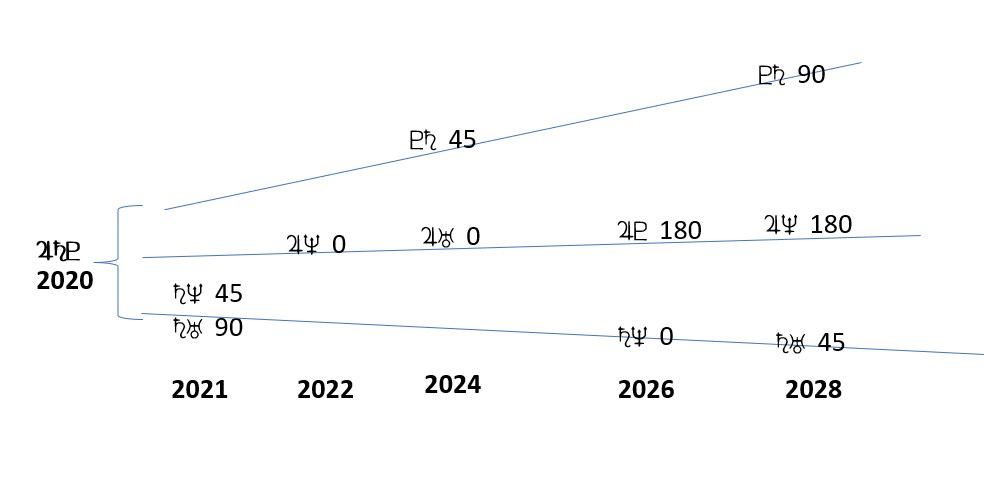
(table 10)

(table 11)
Since the waxing phases predominate, let's hope the change will take place painlessly.
Conclusion
Anders Engberg-Pedersen (Professor of Comparative Literature – University of Southern Denmark) emphasized in one of his articles that the role of the astrologer in old times was to determine the advantageous moments and geographical direction where the combat commander would be successful according to the stars. (17) Therefore, I think that as astrologers, we should aim to determine the connection between the sky and the earthly events as realistically as possible.
André Barbault, one of the most important pioneers of mundane astrology in the twentieth century, describes how history and wars connect and develop in accordance with the cycles of the outer planets.
Morning Star Venus is described in the records, both written and depicted, from ancient civilizations to the present day, as a symbol of war. However, no significant confirmation was found in the sample consisting of 161 charts. Further examination of the research sample by expanding it may yield more accurate results.
Although the Mayans called Venus a war star, they recorded that it was observed 70% as an evening star rather than the morning star phase. The research results confirm the Mayan codexes from the point of view of the Venus phase. (18)
Perhaps a more effective approach would be to study the position of other planets vis-à-vis the horizon, rather than linking the issue to a specific position such as Venus being an indication of war.
As my mentor and teacher Meira Epstein suggested: Morning Star Venus rising on the eastern horizon places it in the 12th house of the chart, which is typically described as the house of enemies and troubles. However, while setting in the western horizon as the evening star, it is located in 7th house of the chart, which is the house of agreement and treaties.
Bibliography